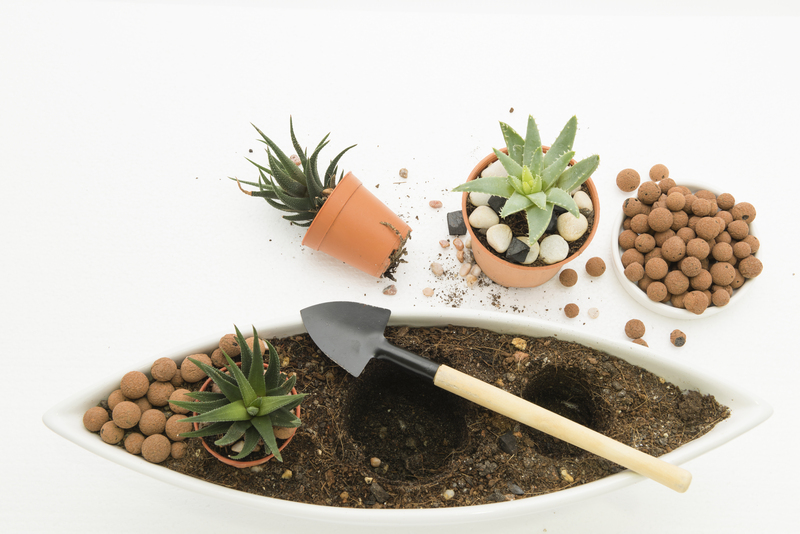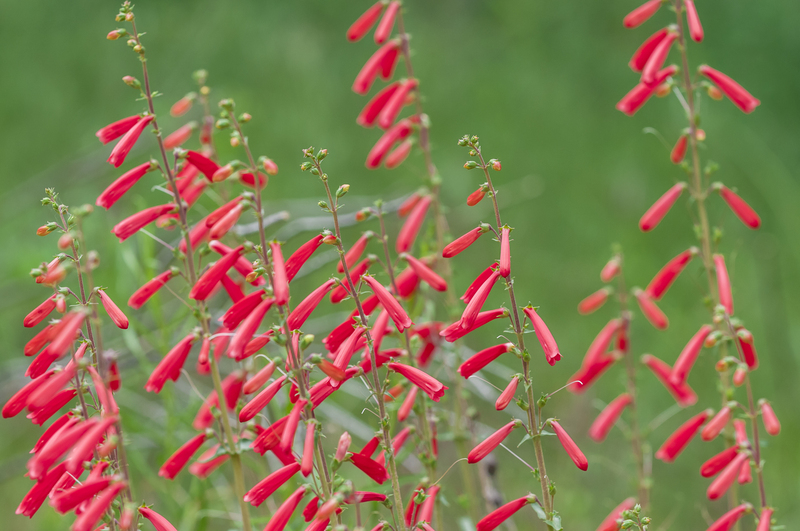How to Maintain Weed Control with Ease
Posted on 26/06/2025
How to Maintain Weed Control with Ease: A Comprehensive Guide
Weed control is one of the most persistent and time-consuming challenges faced by gardeners, landscapers, and property owners. Whether you manage a vegetable patch, decorative flowerbeds, lawns, or larger agricultural spaces, unwanted weeds can threaten the health and beauty of your plants. Fortunately, maintaining weed-free spaces does not have to be an overwhelming task. In this article, we'll explore effective and easy strategies to keep your garden or lawn weed-free throughout the growing season and beyond.

Understanding Weeds and Their Impact
What Are Weeds?
Weeds are unwanted plants that grow in spaces where they are not intentionally cultivated. They often exhibit rapid growth, produce immense quantities of seeds, and can:
- Compete with desired plants for water, nutrients, and sunlight
- Harbor pests and disease
- Reduce the visual appeal of gardens or landscapes
- Lower crop yields or overall plant health
Common Types of Weeds
There are several kinds of weeds, each with distinctive characteristics:
- Annual Weeds: Complete their life cycle in one season (e.g., chickweed, crabgrass)
- Perennial Weeds: Return year after year from persistent roots (e.g., dandelions, bindweed)
- Biennial Weeds: Take two years to complete their life cycle (e.g., thistles, wild carrot)
Principles of Easy Weed Control
Successful and effortless weed control relies on combining different techniques for long-term management. Here's how you can control weeds easily and keep your property looking its best:
1. Preventing Weed Growth in the First Place
Prevention is always better than cure. Here are sustainable practices to minimize weed infestation:
- Mulching: Apply a 2-3 inch layer of organic mulch (like wood chips, straw, or leaves) or landscape fabric around plants to block sunlight from reaching weed seeds, preventing their germination.
- Dense Planting: Plant your gardens close together so that mature plants shade the ground, making it harder for weeds to find sunlight and grow.
- Healthy Soil: Regularly amend your soil with compost. Healthy soil encourages robust plants that can naturally outcompete many weeds.
- Avoid Soil Disturbance: Tilling can bring new weed seeds to the surface. Reduce digging and avoid leaving bare soil exposed.
2. Consistent and Timely Weed Removal
Nothing beats regular maintenance for keeping weeds under control. Here are best practices:
- Hand-pulling: Especially effective for young, shallow-rooted weeds. Pull weeds after rain when the soil is soft, ensuring you remove the entire root.
- Hoeing: Use a sharp hoe to cut weed seedlings at the soil surface, particularly in rows or open soil areas.
- Spot-Treating: For persistent or hard-to-reach places, spot-treat weeds with organic weed killers like vinegar, boiling water, or a carefully applied targeted herbicide if necessary.
3. Smart Lawn and Garden Practices for Weed Suppression
A thriving, well-maintained lawn or garden is less vulnerable to weed invasion. Implement these strategies for sustained weed control:
- Mow High: Set your mower blade high (about 3 inches) to shade weed seeds and encourage lush, competitive grass.
- Reseed Bare Patches: Fill in bare spots in your lawn quickly to prevent weed colonization.
- Rotate Crops: In vegetable gardens, rotate families of plants each year to disrupt weed life cycles and improve soil health.
- Edge Beds: Create physical or trench edging around garden beds to stop creeping weeds like grass or bindweed.
Organic and Natural Methods for Long-Term Weed Control
Mulching: Nature's Weed Blanket
Mulch remains one of the most effective, eco-friendly ways to block weeds. Here's why and how to use mulch for effortless weed suppression:
- Organic Mulch (wood chips, straw, leaves): Slowly decomposes, enriching soil and improving moisture retention while blocking light from reaching weeds.
- Inorganic Mulch (gravel, landscaping fabric): Offers longer-term suppression, especially in walkways or perennial beds.
- Tips: Replenish mulch as it decomposes and keep it a few inches from plant stems to prevent rot.
Cover Crops: Smothering Weeds Naturally
Planting dense, fast-growing "cover crops" (like clover, rye, or buckwheat) during off-seasons:
- Suppresses weed growth by forming a living mulch
- Adds nutrients back to the soil when tilled under
- Improves soil structure
Flame Weeding and Solarization
For larger or heavily infested areas, these organic options can help:
- Flame Weeding: Uses a propane torch to briefly heat and kill annual weeds without disturbing soil.
- Solarization: Covers soil with clear plastic in hot weather for 4-6 weeks to "cook" and kill weed seeds.
Minimizing Reliance on Herbicides
Safe Herbicide Use
While chemical herbicides are sometimes necessary--especially for invasive, perennial, or poisonous weeds--always use them judiciously and safely. Choose the least toxic options, spot-treat rather than blanket-spray, and follow all label directions carefully. Many organic or natural options (like acetic acid or fatty acid herbicides) offer safer alternatives for home gardeners seeking easy weed control.
Weed Barriers and Landscape Fabrics
Landscape fabrics, weed mats, or cardboard sheets serve as physical barriers:
- Cut off sunlight to weeds and reduce annual maintenance
- Work best beneath mulch or in paths between beds
Weed Identification and Targeted Action
Identify Weeds Accurately
Proper weed identification is essential for targeted eradication. Many weeds look alike but require unique approaches:
- Use field guides, extension websites, or plant identification apps
- Note root depth, leaf type, flowering time, and growth habit
- Some weeds have deep taproots (e.g., dandelions), while others spread by runners (e.g., crabgrass)
Timing is Everything
For maximum effectiveness in weed control:
- Remove weeds before they flower and set seed
- Target annuals in early spring and perennials in late fall or early spring
- Consistent weeding prevents a buildup of dormant seeds in the soil
Weed Management for Specific Areas
Lawn Weed Control
For lush, weed-resistant lawns:
- Feed and Water Properly: Well-nourished grass crowds out weeds
- Aerate Annually: Relieve compaction and strengthen roots
- Use Pre-Emergent Herbicides: Prevent crabgrass and other annuals before they even sprout (apply early spring)
Garden Bed Weed Maintenance
- Spot-check beds weekly
- Apply mulch generously
- Hand-weed when soil is soft
- Edge beds to keep out encroaching grass and perennials
Hardscape and Pathway Weed Control
- Sweep or blow debris regularly
- Apply natural weed killer or boiling water for cracks
- Use polymeric sand between pavers to inhibit growth
Proactive Tips for Year-Round Easy Weed Control
- Inspect your property frequently: Thirty minutes a week can save hours in the long run.
- Record problem spots: Keep a gardening journal or take photos to track recurring weed issues and successful solutions.
- Manage borders and fences: Weeds often sneak in from the edges--be vigilant along all boundaries.
- Maintain sturdy, healthy plants: The best defense is a strong offense--vigorously growing plants are the best weed deterrent.

Frequently Asked Questions About Weed Control
Can weeds be completely eliminated?
While complete elimination is difficult--since wind, birds, pets, and soil all carry new seeds--informed and consistent practices can minimize weeds to near zero and keep your yard looking excellent.
Is manual weeding still necessary with mulching?
Occasional weeds may sprout even through mulch, but they'll be weaker and easier to remove. Mulching dramatically reduces overall weed growth.
Are chemical herbicides safe for pets and children?
Some are safer than others. Always keep pets and children away from treated areas until the product is fully dry or as recommended by the manufacturer. Whenever possible, choose non-toxic or natural alternatives.
Conclusion: Achieve Effortless Weed Management
By adopting a multifaceted approach to weed control--combining prevention, cultivation, timely removal, mulching, and strategic use of natural or chemical controls--you can enjoy a weed-free garden or lawn without spending hours each week. Monitor your garden regularly, act promptly, and encourage dense, healthy plantings to ensure that weeds never get the upper hand.
With these tips, maintaining weed control with ease is not just a dream--it's an achievable reality for every gardener and homeowner.

